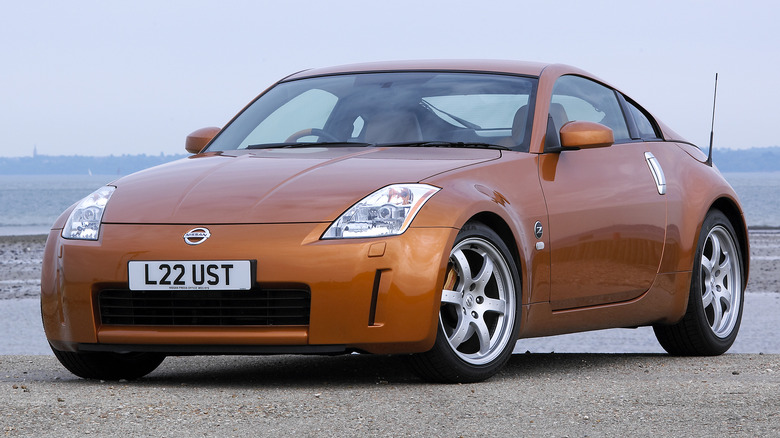
Heritage Images/Getty Images
It’s a common misconception that cars that are both easy and cheap to work on have to be boring. While it’s true that bestselling cars from the likes of Toyota and Honda do sometimes fit both categories — that is, affordable and a bit dull — it’s unfair to tarnish all cars that fit that category with the same brush. However, getting a car that’s both interesting to enthusiasts and less of a hassle to work on often means accepting a few compromises. One of the main compromises concerns the car’s age: most cars that fit the bill are older, with some even approaching classic car territory.
Many enthusiasts’ favorites from decades past are prized for their wrench-friendly nature, being both easy to work on and easy to mod should their owners wish. Critically, they also won’t break the bank along the way. There are plenty of cars that tick the right boxes, and these budget-friendly enthusiast cars span a wide range of automotive niches. Whether they’re famed for their off-road capability or their tire-shredding straight line performance, these top picks are great options for home mechanics on a budget.
Mazda Miata NB
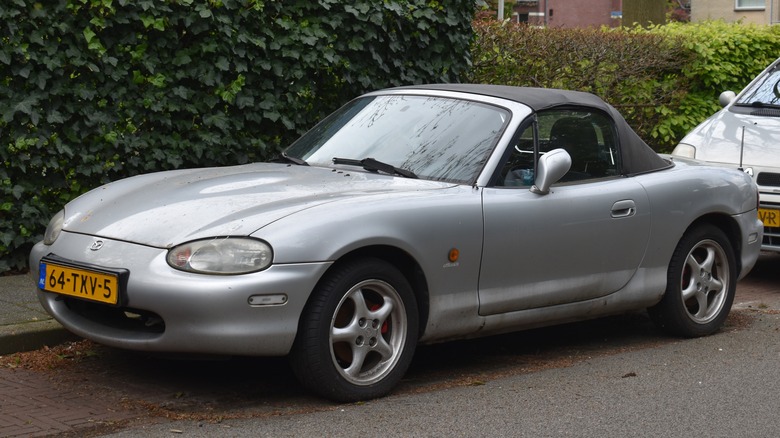
Stoqliq/Shutterstock
It’s an old automotive cliche that «the answer is always Miata.» However, there’s a good reason that the saying is so persistent. When it comes to affordable, hassle-free sports cars, few things can beat Mazda’s little roadster. That remains true for every generation of the Miata, but the NB generation is a particular standout at the moment in terms of value for money. Not only are many examples hitting the bottom of their depreciation curves, they’re also simple enough that even novice wrenchers should be able to work on them with basic tools.
The NB was built between 1999 and 2005 and boasted a slew of upgrades over the original NA Miata. It was more powerful, better equipped, and featured superior handling, yet for now, it remains the cheaper choice of the two. The 1.8L engine isn’t the most powerful unit in stock form, but its fairly bulletproof assuming its been looked after correctly. It’s also ripe for upgrading, although it’s worth noting that many engine modifications might have an impact on the NB’s famed reliability. In stock or modified form, few other sports cars offer quite such an enticing package of driving fun, low running costs, and ease of maintenance as the second generation Miata.
Chevrolet Corvette C5
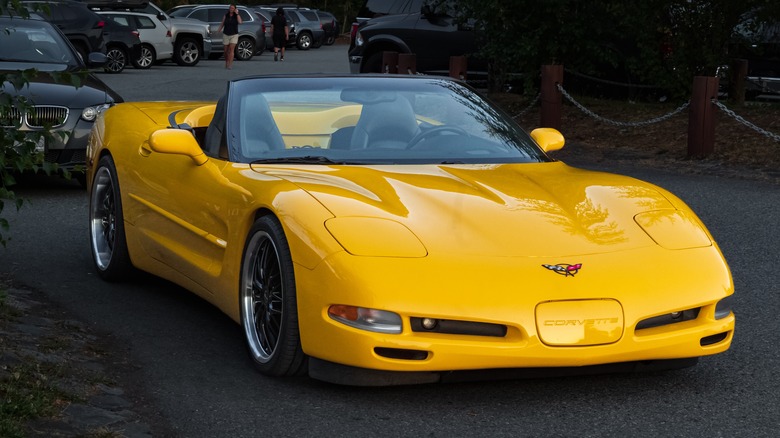
Elena_Alex_Ferns/Shutterstock
As well as being one of the easiest generations to work on, the C5 is also one of the most affordable Corvettes on the used market. That makes it a great entry point into the world of Corvette ownership, although there are a few things that potential buyers will want to consider before making the jump. First is the variant they’re looking for: the Z06 is the most potent C5, offering 385 horsepower from its 5.7L LS V8 engine, but it commands a premium in the resale market. The fixed-roof coupe is slightly cheaper and slightly less powerful, while the convertible is the best option for those who prefer open air escapades.
The C5’s increasing age comes with both advantages and disadvantages. The car is simpler in its construction than a modern Corvette, and so easier to work on for less experienced owners. Since there are still so many around, parts supply is also plentiful. However, being an older car, there is more of a risk that any given part is nearing the end of its life, and so it’s worth paying extra for an example in better condition.
Modifications are also common, and can result in lower reliability than a stock car. There are a few pitfalls, then, but overall, the C5 makes a great starter Corvette, and is considered one of the most affordable cars in its segment, both in terms of upfront and maintenance costs.
Jeep Wrangler TJ
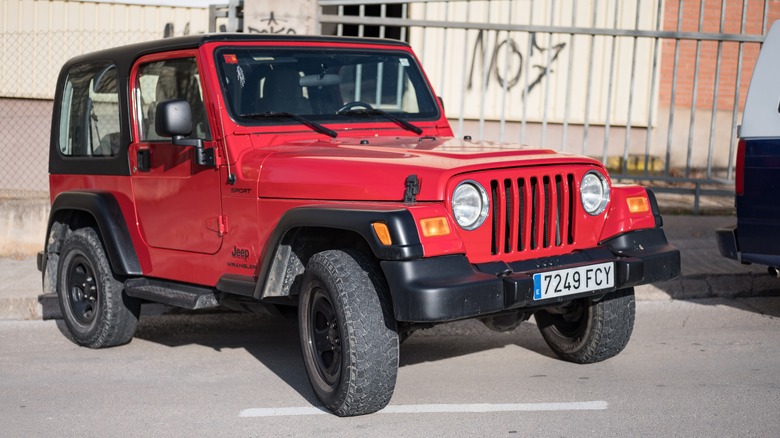
adolf martinez soler/Shutterstock
For enthusiasts whose weekend adventures involve more driving off the asphalt than on it, a Jeep Wrangler is a solid choice. The TJ generation Wrangler was produced between 1997 and 2006 and offers a great combination of high parts availability, straightforward construction, and lots of modification potential. As a result, it’s among the easiest generations of the Wrangler to source and work on.
Owners report that, with a suitable amount of wrenching knowledge, almost every age-related problem on the car can be fixed without much trouble. Like most cars of its age, rust can be more of a tricky problem, so finding an example that’s been regularly rust-proofed is advisable to avoid further issues later down the line.
It’s not the only wrencher-friendly Wrangler generation, but it’s arguably one of the best, as the TJ strikes a great balance between used market availability and approachability for less experienced home mechanics. Jeeps that are significantly older might be trickier to find in good condition, at least for those on a tighter budget, while newer Jeeps are more complicated to work on.
Ford Mustang SN95
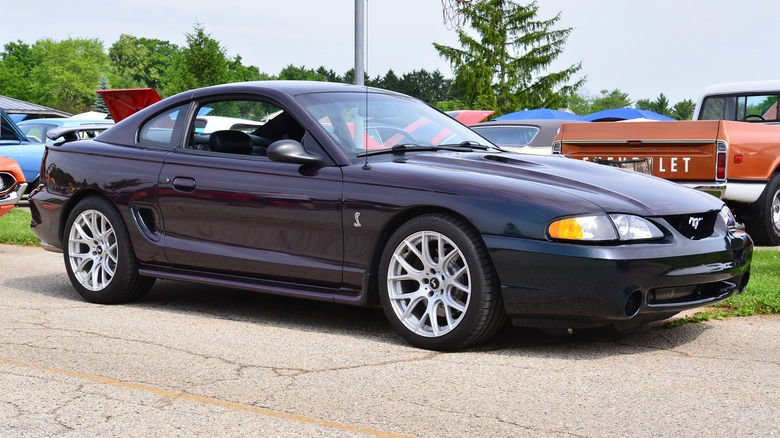
Tony Savino/Shutterstock
While a Mustang won’t win any points for originality, it makes both a great base for a project car or an enjoyable daily driver in stock form. The SN95 generation, produced from 1994 to 2004, was an overhauled version of the Fox body car, and remained just as straightforward to work on as its predecessor. However, being the newer and less collectable of the two, it’s easier to find a clean SN95 for cheap.
V8-powered cars are the enthusiast’s choice. A cheaper V6 was available but it’s too slow to be of interest to those looking for driving enjoyment. As with any older car, buying an example that’s in the best condition possible is always advisable, as it reduces the chance of any large unexpected repair jobs. If things do go wrong, parts availability is generally very good, although body panels and interior trim might be trickier to find. Mechanically, however, most of the internals are easy to fix, and there’s plenty of documentation available on owner forums to help less experienced wrenchers.
Subaru Impreza GC8
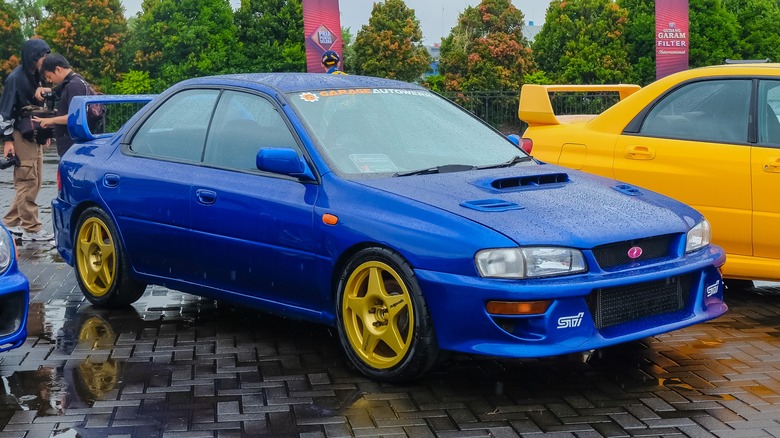
Rakhmat Darmawan/Shutterstock
The Subaru Impreza GC8 made SlashGear’s list of the best rally cars for beginners for many of the same reasons it’s featured here. Firstly, it’s known for being tough, and can withstand years of hard use without any significant drop in reliability. Secondly, it’s a firm favorite among grassroots motorsports enthusiasts, which means there is a huge wealth of information available on owners’ forums for all kinds of projects. Whether it’s carrying out simple maintenance or transforming the car into an all-out rally monster, there will be an owner with advice to dispense.
The car does have a few weak spots. Rust is a common and often persistent issue, and therefore, cars that have spent years in areas where roads are often salted might need more work than those kept in hotter, drier climates. In the worst cases, rust can be prohibitively expensive to fix, and will require equipment far beyond what the average home mechanic will have to hand. Modifications are also common and when poorly installed can be detrimental to a car’s reliability. Other than that, most problems can be easily and cheaply remedied for someone with the appropriate knowledge, with parts generally straightforward to find.
Honda Del Sol
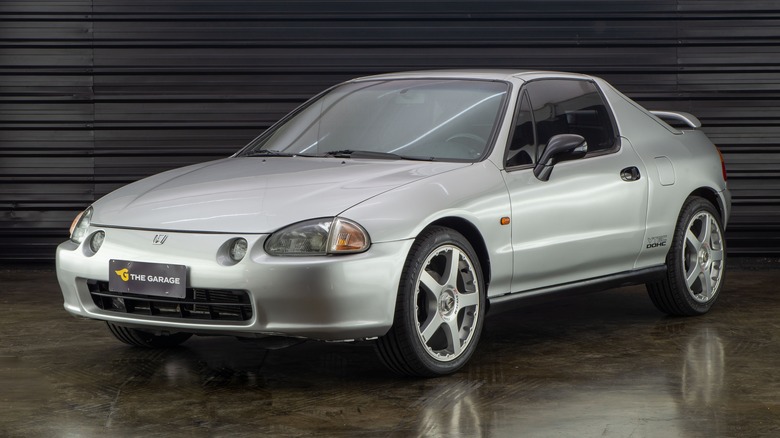
luizsantanna/Shutterstock
As a cheap, fun daily driver, there’s a lot to like about the Honda Del Sol. It was based on – and shared a lot of parts with — the Civic, and as a result, most of the car’s oily bits are easy to replace if they go wrong. It was designed to compete against the Mazda Miata, but never quite caught on in the same way, and that’s helped keep resale values within reach of most enthusiasts. It suffered from a mixed image during its time on sale, with the car’s targa roof having a reputation as being prone to leaking.
That reputation wasn’t for nothing, and over the years, the roof has proved to be one of the least reliable parts of the car. Even owners who are otherwise sold on the Del Sol experience warn that the leaking roof is an inevitable part of living with one. That said, most of the mechanicals have proven to be thoroughly reliable over the years, and fixing them is generally no trickier than fixing a run-of-the-mill Civic.
Volvo 240
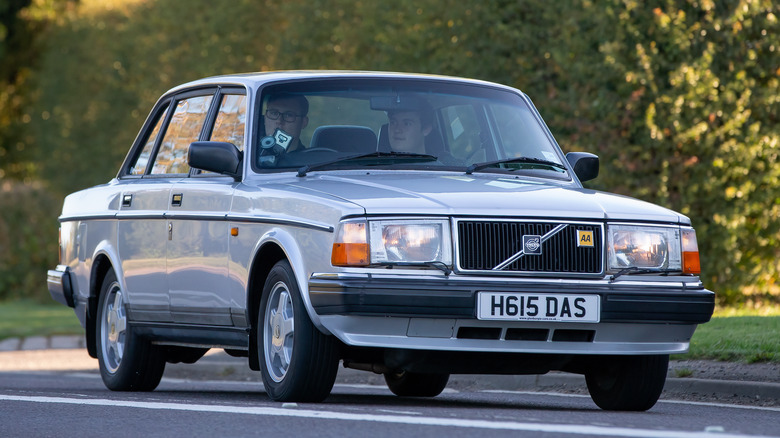
Sue Thatcher/Getty Images
The Volvo 240 is generally a low maintenance classic car, but when it does come time to work on it, it’s no hassle. Owners report that the wide availability of parts and the car’s simple construction make it possible to do most maintenance and repair jobs on a driveway, without needing specialist equipment. A significant number of parts are also shared with other Volvos of the era, making it easy to find second-hand parts in junkyards for anyone working on a tighter budget.
The car’s continued popularity over the decades also means that there are plenty of owners’ forums with advice on repairs, although assuming the car has been looked after properly, it shouldn’t need too many of them. In fact, SlashGear previously crowned the car one of the most reliable sedans ever built, a title backed up by the hordes of owners with high mileage examples. As is the case with most older cars, smaller pieces of trim may be trickier to track down, but most major mechanical components are still easy enough to source for American owners.
Nissan 350Z
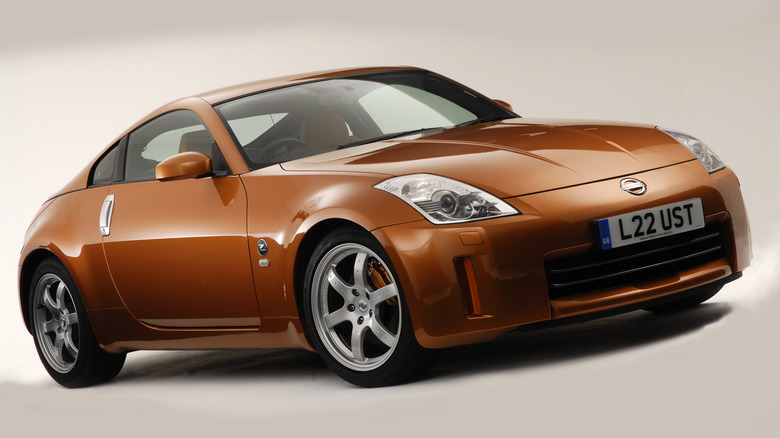
Heritage Images/Getty Images
Offering plenty of stock power and high modification potential at an affordable used price, the Nissan 350Z has been a favorite for sports car buyers on a budget for many years now. The launch of the 350Z marked a return to the Z line’s roots, ditching the complex systems and straight line prowess of the 300ZX in return for a lower starting price and renewed simplicity. It proved to be a sales hit, and resurrected buyer interest in the Z line after the high running costs of its predecessor tanked sales.
The car’s simplicity makes it less of a chore to work on than other Z cars, and since it’s still a popular choice among enthusiasts, there are plenty of other owners on hand for advice online or at meets. Some owners note that, as with many Japanese cars, there’s less room for wrenchers with larger hands to maneuver while working. That aside, most agree that the 350Z is little trouble for home mechanics. As a bonus, almost every job can be completed without the need for brand-specific tools, and so more experienced wrenchers should already have all the tools they need to hand.
Ford Bronco (5th Gen)
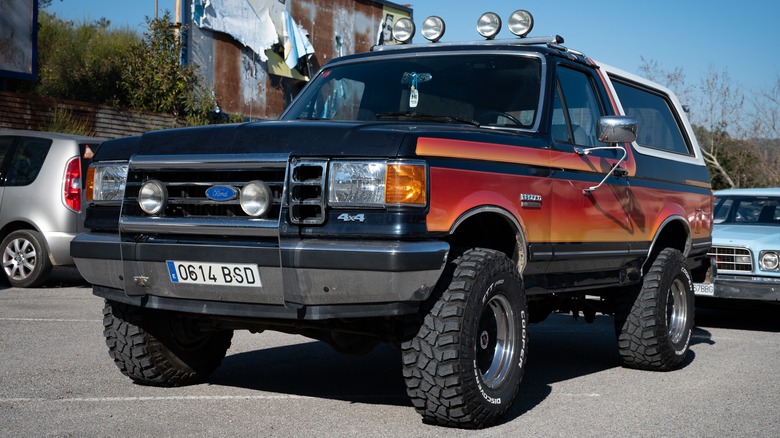
adolf martinez soler/Shutterstock
The fifth-generation Ford Bronco is a trail-happy SUV that’s reliable enough to be used as a daily driver. Unlike its current generation successor, there are relatively few electrical systems to go wrong, and mechanical parts are generally easy to source. The SUV was produced between 1992 and 1996 and boasts an old-school, boxy look that’s similar to its predecessors. It’s a favorite among off-road enthusiasts and as a result there’s a large aftermarket for the car, but it’s still very capable in stock form.
The renewed interest in the Bronco line in the wake of the modern car’s success means that clean examples aren’t as cheap as they once were, but they’re still in affordable territory for now. Opinions differ on the best spec for the Bronco, but in general, it’s hard to go wrong assuming the example in question has been suitably looked after. Like any older car, a tidier example will generally mean less remedial work be needed over time.
Subaru BRZ/Toyota 86
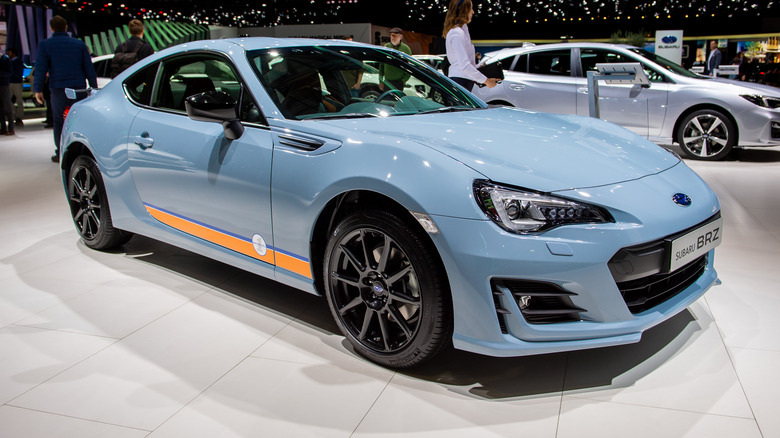
Robert Hradil/Getty Images
The original Toyobaru twins, the Subaru BRZ and Toyota 86, are infamously not the most powerful sports cars on the market. The second-generation car went some way in addressing the perceived lack of power, and it’s arguably a superior product. However, there’s plenty to like about the original generation, not least how easy it is to work on for a modern car. It’s built to be readily modifiable too, in case owners want to give their car the power boost that some argue it should have had from the factory.
The Subaru BRZ and Toyota 86 are mechanically identical, with the main differences being a slightly different handling setup and the badge on the front. That means parts are readily interchangeable, and given how popular the sports car twins have proved to be with enthusiasts, those parts should continue to be available well into the future. Whether it’s to use as the base for a project or keep in stock form as an enjoyable daily driver, the simplicity and low running costs of the BRZ/86 makes it easy to recommend.